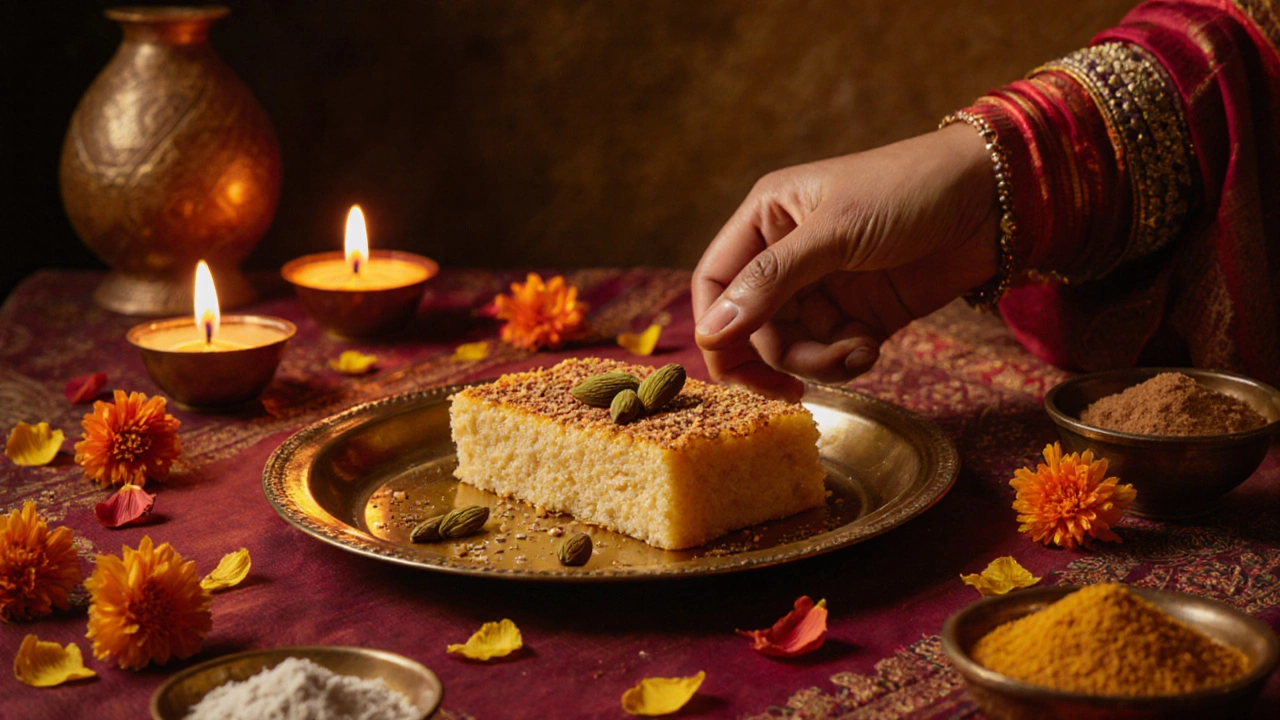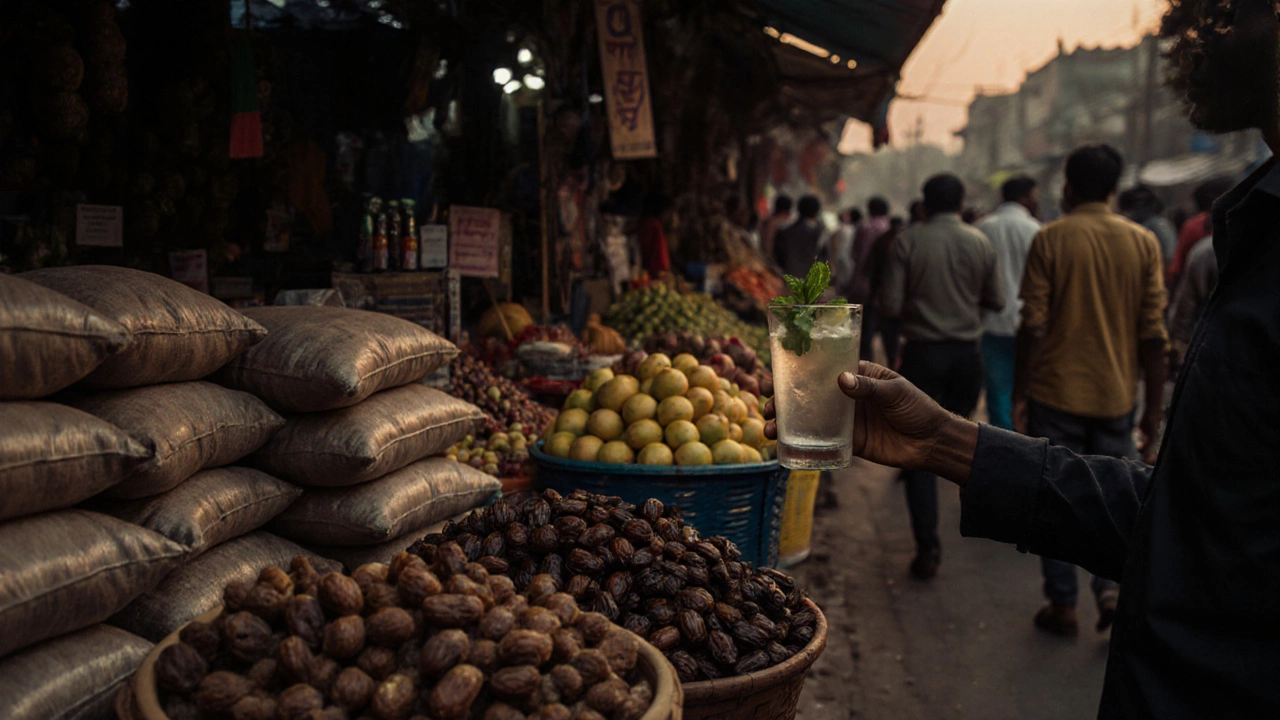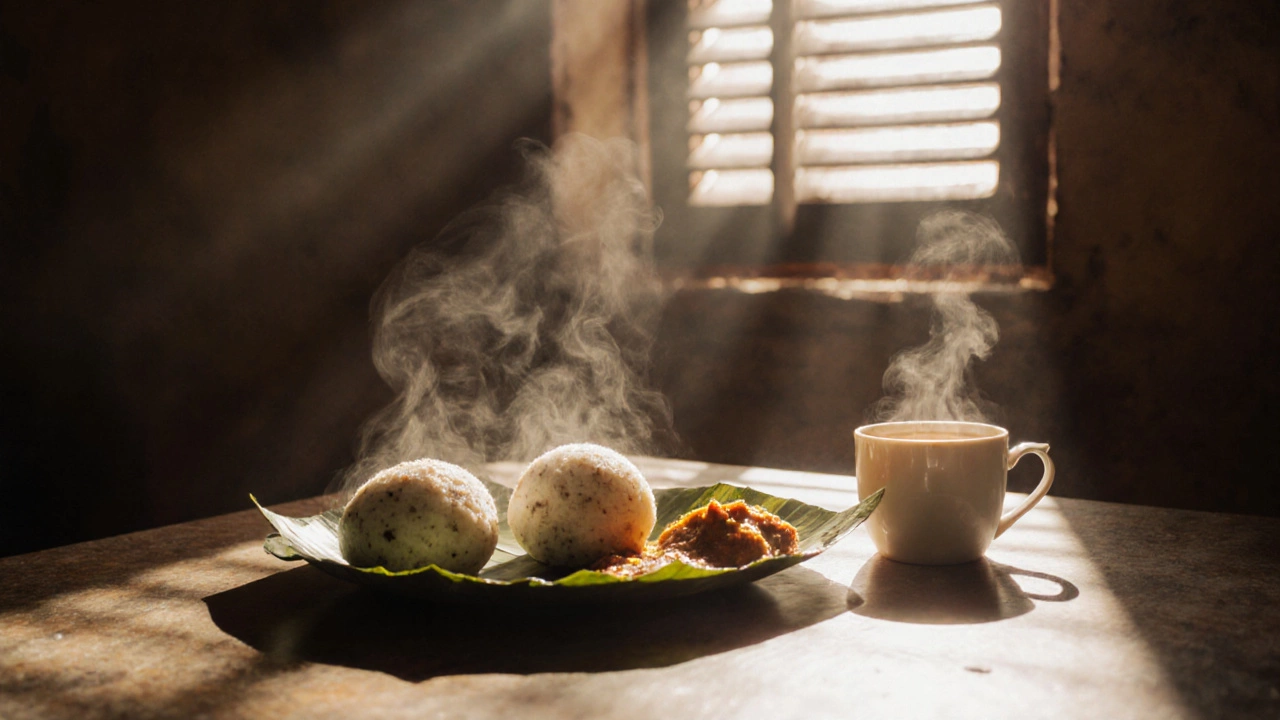Daily Sugar Intake Calculator
How much sugar do you consume daily?
Compare your intake to the global average (37kg/year) and India's low consumption (14.5kg/year).
Your Food Choices
Key Facts
India's Sugar Context
India consumes only 14.5 kg of sugar per person per year (about 40g daily) - far below the global average of 37 kg/year. Sweets are reserved for celebrations, not daily consumption.
WHO Recommendations
The World Health Organization recommends no more than 25 grams of added sugar per day for adults.
Your Sugar Intake
Recommended WHO limit: 25g/day
India average: 40g/day
Global average (Mexico/US): 110g/day
What this means
When you think of sugar, you might picture candy, soda, or maybe a plate of jalebi dripping in syrup. But the truth is, some countries barely touch the stuff - not because they don’t like sweet food, but because their culture, diet, and traditions simply don’t rely on it. And no, it’s not a Scandinavian country or a health-obsessed Silicon Valley startup. The country with the lowest sugar consumption in the world is India.
India’s Sugar Paradox
India is the second-largest producer of sugar in the world. It’s also home to some of the sweetest desserts you’ll ever taste - gulab jamun, rasgulla, barfi, jalebi. So how can it have the lowest sugar intake? The answer lies in the difference between production and personal consumption.
Most of India’s sugar isn’t eaten by its people. It’s exported. Or used in industrial food processing, alcohol, and textiles. When you look at how much sugar the average Indian eats per year, the number is shockingly low: just 14.5 kilograms per person. That’s less than 40 grams a day. Compare that to the United States, where the average person eats over 40 kilograms a year - more than 110 grams daily. Or Mexico, where it’s 37 kilograms. India’s numbers are half of what you’d find in most Western nations.
Why? Because Indian meals aren’t built around added sugar. Yes, there are sweets - but they’re not daily snacks. They’re occasional treats, reserved for festivals, weddings, or religious offerings. A family might make a small batch of ladoo once a month. One piece. Shared among five people. That’s not a habit. That’s a ritual.
How Indian Meals Work Without Sugar
Indian cuisine doesn’t need sugar to feel complete. It balances flavors in a way most Western diets don’t. Think of a simple lunch: dal, rice, a vegetable curry, pickles, and yogurt. The curry might have a hint of jaggery to round out the spices - not to make it sweet, but to deepen the flavor. The yogurt is plain, sometimes salted. The pickles are spicy, sour, tangy. No sugar needed.
Even desserts are different. Traditional Indian sweets use natural sweetness from milk solids, dried fruits, or jaggery - unrefined cane sugar that’s less processed than white sugar. Jaggery has minerals, a deeper flavor, and is used in much smaller amounts. A single barfi might contain just a tablespoon of jaggery for the whole batch. That’s not dessert culture - that’s flavor culture.
And here’s the kicker: most Indians don’t drink soda. Not because it’s expensive - though it is - but because it’s not part of the culture. Tea is the daily drink, often brewed with milk and spices like cardamom or ginger. No sugar added. Or if it is, just a teaspoon, shared among three cups.
The Role of Tradition and Religion
Religion plays a big role. Many Hindu households avoid refined sugar during fasting periods. Jain communities avoid root vegetables and refined sugar altogether. Muslim families in India often use honey or dates in sweets instead of white sugar. These aren’t dietary trends - they’re deeply rooted practices.
Also, sugar has never been a status symbol in India. In the West, sugary snacks are marketed as rewards, comfort, or indulgence. In India, sweetness is spiritual. It’s offered to gods. It’s given to guests. It’s not something you eat because you’re bored or stressed. It’s something you eat because it’s time to celebrate.

What About Other Low-Sugar Countries?
India isn’t alone. Other countries with low sugar intake include:
- Japan - 17.5 kg per person per year. Their sweets are subtle: mochi, anko (red bean paste), and matcha-flavored treats. No soda culture. No dessert after every meal.
- China - 18 kg per person. Traditional desserts like tangyuan or almond cookies use minimal sugar. Sweetness comes from fruit, not syrup.
- Sweden - 22 kg per person. Surprisingly low for a Nordic country. They eat a lot of bread and fish, not pastries. Even their cinnamon buns are less sweet than American versions.
But none of them come close to India’s combination of low intake, high cultural significance, and minimal processed sugar use. Even in rural villages where incomes are low, people aren’t turning to cheap sugary snacks. They’re eating what they grow - rice, lentils, greens, ghee, and spices.
Why This Matters for Indian Sweets
If you’re making traditional Indian sweets, you’re not making candy. You’re making something with texture, aroma, and meaning. The sugar in a piece of gulab jamun isn’t there to overload your taste buds. It’s there to soften the fried dough, to let the cardamom and rosewater shine. The syrup is light, not sticky. The sweetness is a whisper, not a shout.
Modern Indian families are starting to cut back even more. Diabetics are swapping jaggery for dates. Parents are skipping sugar in children’s snacks. Ayurvedic practitioners recommend honey or stevia for those who need sweetness. But even in these changes, the core idea stays the same: sugar is not a daily necessity. It’s a gift.

The Bigger Picture
Global health organizations warn that sugar is a silent epidemic. Heart disease, obesity, and type 2 diabetes are rising everywhere - except in places like rural India, where sugar intake remains low and traditional diets prevail. The WHO recommends no more than 25 grams of added sugar per day. Most Indians already live under that limit - not by choice, but by culture.
That doesn’t mean India is perfect. Urban centers are catching up. Soda sales are rising. Processed snacks are creeping into school lunches. But the heart of Indian eating - home-cooked meals, shared meals, meals without sugar - still holds strong.
If you want to eat less sugar, you don’t need to go on a diet. You just need to eat like an Indian household. Skip the dessert after every meal. Use spices instead of syrup. Make sweets rare, not routine. Let sweetness be a moment, not a habit.
Real-Life Example: A Day in a South Indian Home
Imagine a morning in Chennai. Breakfast: idli with coconut chutney and sambar. No sugar. Lunch: rice, sambar, spinach curry, buttermilk. No sugar. Evening snack: roasted peanuts with a pinch of salt. No sugar. Dinner: chapati, dal, cucumber salad. No sugar.
On Diwali, they make mysore pak - a rich sweet made with ghee, gram flour, and jaggery. One small piece. Shared. Enjoyed slowly. Then it’s back to plain tea and no sugar for the next six months.
That’s not deprivation. That’s balance.
Why does India have low sugar consumption despite making so many sweets?
India produces a lot of sugar, but most of it is exported or used in industry. The average person eats only about 14.5 kg of sugar per year - far less than the global average. Indian sweets are made with minimal sugar, used sparingly, and reserved for special occasions, not daily meals.
Is jaggery healthier than white sugar?
Yes, jaggery is less processed than white sugar and retains trace minerals like iron and magnesium. It has a lower glycemic index and is used in smaller amounts in traditional sweets. But it’s still sugar - so moderation matters, even with jaggery.
Do Indians drink sugary beverages?
Most don’t. Tea is the daily drink, often served without sugar. Even when sugar is added, it’s usually just a teaspoon shared among multiple cups. Soda consumption is low compared to Western countries, especially outside cities. Traditional drinks like buttermilk, lassi, and nimbu paani use natural sweetness from fruit or jaggery.
Can I make Indian sweets without sugar?
Yes. Many traditional recipes already use jaggery, dates, or dried fruits for sweetness. You can substitute sugar with mashed ripe bananas, dates paste, or a touch of stevia. The key is to reduce the amount - Indian sweets are meant to be subtly sweet, not cloying.
Why don’t Indians eat dessert after every meal?
Because dessert isn’t a course in Indian meals - it’s a celebration. Meals are balanced with savory, spicy, sour, and bitter flavors. Sweetness is reserved for festivals, rituals, or as an offering. Eating sweets daily would go against the cultural rhythm of food.
